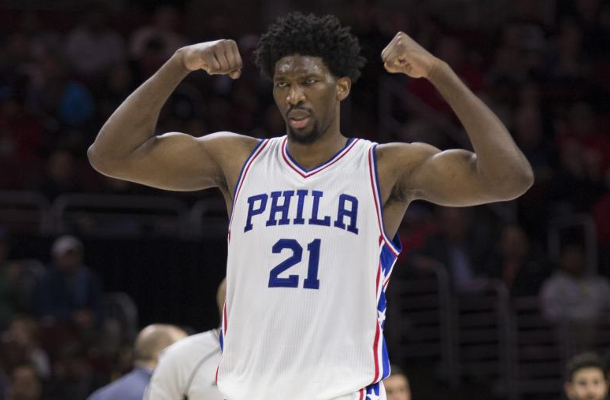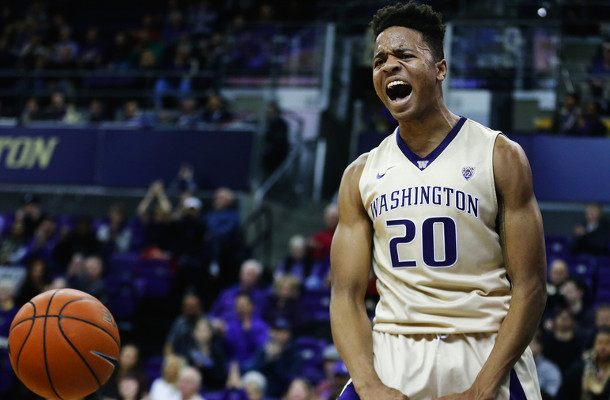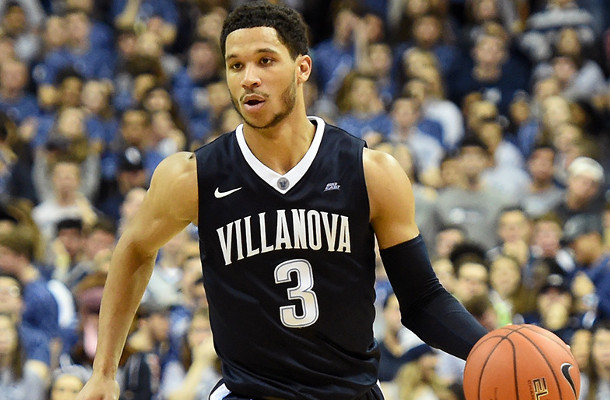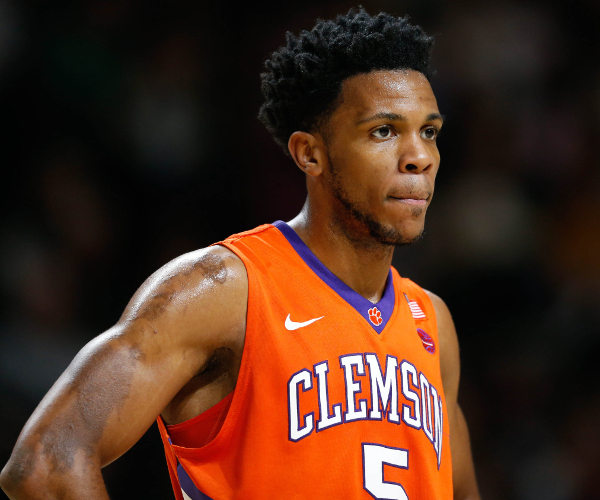Sam Hinkie, Talent Evaluator: What We Know, What We Don’t Know, and What That Means
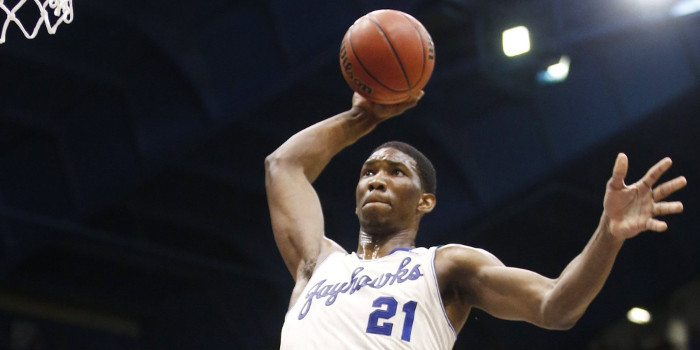
If there’s one thing this entire plan hinges on, it’s Sam Hinkie’s ability to evaluate talent.
While luck is inevitably a key factor in team success — Is talent available where you’re drafting? Does lady luck strike down your future stars with injuries? etc — no plan can succeed without a solid talent evaluator at the helm, and especially not the type of rebuild the Sixers have embarked upon.
The skeptic would say that Sam Hinkie’s continued practice of selecting players who will not immediately play has drastically limited our ability to rate Hinkie in this regard. And while there is some truth to that, it’s not Hinkie’s job to worry about whether or not the fans and the press can evaluate his job performance 2 years into his tenure: it’s his job to make the team great.
The optimist would look at the highly pedigreed talent that Hinkie has assembled in his short time in Philadelphia and be excited about the future. That delayed gratification, that willingness to delay the gratification which is the only reason Hinkie was able to grab said talent, is the only reason we’re still having this debate.
Which is it? What do we know so far?
The first thing that needs to be said is that it’s far too early to make a determination one way or the other. Hinkie has only had two draft classes so far, and 2 years is far too little time to make any firm declaration on whether a draft was good or bad, much less whether somebody is generally good or bad at evaluating talent.
That’s especially true for a team that has been willing to take risks on talent, risks which have allowed them to gather elite level prospects, but risks that have limited how much return we’ve seen from those prospects so far.
Still, it’s worth taking a look at the moves that he did make. Any data is better than no data, after all.
2013 Draft:
Nerlens Noel (6th overall, acquired by trading Jrue Holiday):
It would be impossible to rate Sam Hinkie’s ability to evaluate talent without talking extensively about Nerlens Noel.
The decision to trade Jrue Holiday for Noel and a future first round pick was not only an incredibly important decision to make, but also one which displays Hinkie’s approach as much as it does his ability to evaluate talent.
Nerlens Noel - 2013 draft
Nerlens Noel's rank in projection models among prospects in the 2013 draft| Model | Value | Rank (in 2013 draft) |
|---|---|---|
| pWARP | 3.6 | 1st |
| VJL - WS Projection | 10.8 | 1st |
| VJL - RAPM Projection | 14.4 | 1st |
| VJL - Star Probability | 33% | 1st |
It’s not that hitting on Noel was this masterful stroke of scouting brilliance. Sure, Noel rated highly in most analytical models, at least those analytical models that are publicly known, but he was rated highly by most “traditional scouts” as well. The real success in the drafting of Nerlens Noel was what Hinkie didn’t fall pray to: impatience.
Drafting Nerlens Noel despite his injury, which ended up causing him to miss his entire rookie season, was something many GM’s at the top of the draft couldn’t justify. And it ended up being a terrible mistake. With the top of the draft being one of the rare avenues for bad teams to get impact players, passing on Noel for guys like Anthony Bennett, Otto Porter, or Cody Zeller was a big mistake. It’s the kind of mistake made at the top of the draft that causes teams to stay at the top of the draft year after year after year. Teams allowed themselves to become a slave to immediacy.
It’s why when we talk about “when“, or when the Sixers are criticized for “redshirting” all of their draft picks, it’s missing the point. Teams stay bad because they miss out on guys like Nerlens Noel and Joel Embiid in favor of drafting players who aren’t needle movers. Teams don’t stay irrelevant because Nerlens Noel and Joel Embiid miss a season of play.
Grade: A
Michael Carter-Williams (11th overall):
6 months ago, most in the Philadelphia area viewed this as a slam dunk. Now, it’s become a blackmark on Hinkie’s résumé to some.
I touched on this last month, but Michael Carter-Williams was a risk. If he never improved his jump shot, his overall effectiveness would be severely limited. And, at 23 years of age, early signs on whether he will improve his jump shot are not good.
But it was a risk worth taking.
Michael Carter-Williams showed the intrigue: a 6’6″ point guard, with a 41″ vertical leap, who was great in transition, and was a versatile defender who could force turnovers on the perimeter. If he could ever improve his perimeter shot, he had the chance to be way, way more valuable than where he was picked.
And that last part is key. If Michael Carter-Williams didn’t have risk, if he had all that potential to be great without holes or uncertainty in his game, he doesn’t stick around until 11 in what was considered a relatively weak draft.
Sure, Giannis Antetokounmpo and Rudy Gobert have turned into freaks, and clearly guys you would take over Michael Carter-Williams. But they were relatively unknown diamonds in the rough. If we graded every GM on whether or not he found every diamond in the rough, there wouldn’t be a good GM in the league.
With the situation the Sixers were in, void of any real talent on the club and with a mediocre asset to acquire one, Michael Carter-Williams was a good choice. Not a great choice, as that would be Giannis or Gobert, but a good choice nonetheless.
Grade: B
Arsalan Kazemi (54th overall):
Arsalan Kazemi is an undersized (6’7″) power forward out of Oregon (by way of Rice) who is a rebounding machine. His 29% defensive rebounding rate during his one year at Oregon was the best rate in the country.
He’s put together a nice season over in China, averaging 15 points and 13.7 rebounds for the Chongqing Fly Dragon’s over in the CBA, but he’s not really an NBA player. Undersized, not a great athlete, and without much offensive polish, the cards were always stacked against him.
It wasn’t a horrible mistake drafting him, as letting him play overseas and allowing his body to finish maturing, perhaps to the point where he could contribute in the NBA, made sense, but the odds aren’t all that great that he will find his way to an NBA roster.
Still, expectations for the 54th pick in the draft are extremely low. Nobody drafted after Kazemi in the 2013 draft has played in the NBA so far.
Grade: Incomplete (but hard to call a negative regardless of how it pans out)
2014 Draft:
Joel Embiid (3rd overall):
With the first real asset that was the result of the tank, and the first real high-value asset he had to grab a dominant player, Hinkie doubled down on his pursuit of needle movers over immediacy, drafting Joel Embiid, who many considered to be the most talented player in the draft, despite a navicular bone injury that ended up causing Embiid to miss his entire rookie season.
The decision carries with it more risk than Nerlens Noel’s injury did, as navicular bone injuries haven’t had quite as many success stories as ACL tears have in recent history. But it also carries with it a greater reward.
The selection continues to show Hinkie’s overall mindset, which is to concern himself with guys who can be the backbone of a great team, not short term wins and losses. If the Sixers fail in their objective, it will be because they failed to grab a real difference maker, not because they failed to win 30 games in Nerlens Noel’s rookie season.
Especially with the lack of opportunity at 3 outside of Embiid, it was absolutely the right call. If you look past the percentages (36.7% from the field, 33.5% from 3), Marcus Smart showed some promise as a rookie for Boston, but he’s not a franchise guy. Dante Exum played minutes for Utah down the stretch, but he still clearly has a lot of growth (both physically and in his game) necessary before he consistently makes a positive impact in the league. He’s a guy who would have played, and filled the immediacy void in that regard, but he’s not a guy who made an immediate impact. Aaron Gordon was buried on the bench for Orlando for most of the year.
Looking at the list of available options just reinforces the idea that going for Embiid was the only way to go. Embiid’s foot and back issues may end up preventing him from being the dominant big man that I, and many around the league, believe he can become. But Embiid’s foot wasn’t the greatest available risk among the options of where the Sixers selected at #3: drafting irrelevancy was.
Grade: Incomplete (But, in reality: A)
Dario Saric (12th overall):
Saric is another example of Hinkie’s philosophy, and the point where many skeptical media members and fans alike jumped off the bandwagon. Heading into the draft with 2 lottery picks and nothing to show for it in the 2014-15 season, enough was enough.
Those same fans would have likely been okay with, and many pushing for, the team to draft Doug McDermott, who ended his rookie season playing only 321 minutes for the Chicago Bulls, shooting just 40.2% from the field and 31.7% from three point range for a team that gave up 2 1st round draft picks to acquire him. Again, immediacy over long term talent was the focus for many.
But what have the Sixers missed out on? Elfrid Payton, who ironically ended up going 10th, where the Sixers were originally slated to draft, had a good rookie season, but if the team still had any belief left in Michael Carter-Williams, Payton wasn’t a fit. Zach LaVine showcased athleticism, but, up until the last few games of the season, really struggled to do much positive on the basketball court with that athleticism. Jusuf Nurkic played well for a rookie, but he wouldn’t have fit with Noel or Embiid. Nobody else in the first round drafted after Saric, with the possible exception of Rodney Hood, had any real positive impact during their rookie season.
It’s impossible to look at these guys without looking at the opportunity cost of acquiring them. Sure, Dario Saric likely won’t play in the NBA for his first two seasons after the 2014 draft, and may even wait 3 years to come over, depending on how much he wants to maximize his earning potential and avoid the NBA’s rookie scale (Why? Read here). But the question not only becomes was he worth the wait, but also whether or not there was anybody else there that had enough talent to make Sam Hinkie regret waiting. And the answer appears to be a pretty resounding “meh” on that last point.
It’s easy to see the intrigue around Saric. During Anadolu Efes’ Euroleague playoff series against Real Madrid, Saric, who just turned 21 this past month and playing largely against grown men much older than he is, scored 13 points in each of the first two games, then followed that up with 15 rebounds and 4 assists in game 3, and 12 rebounds and 5 assists in game 4. Having another elite passer in the front court next to Joel Embiid? I’ll take the chance on that.
Grade: A-
K.J. McDaniels (32nd overall):
For this pick, it’s important to separate the talent evaluation aspect of the K.J. McDaniels’ selection from the contract negotiation with K.J. McDaniels. I think Hinkie should have been more flexible in what he offered K.J., but that mistake doesn’t mean the selection of K.J. was wrong.
Once again, it’s important to look at what other options Hinkie had in the 2nd round. There were only 6 players in the 2nd round of the 2014 draft to play at least 500 minutes in their rookie season: K.J. McDaniels (1,352 minutes), Cleanthony Early (647), Jerami Grant (1,377), Markel Brown (781), Jordan Clarkson (1,476), and Cory Jefferson (531).
K.J. McDaniels was clearly not a finished product, with his wildly inconsistent perimeter shooting and mediocre (at best) ball handling holding him back in a big way on the offensive side of the court. But his potential, and especially his defensive potential, was obvious, and well worth selecting with the 32nd pick.
It’s a shame the contract negotiations, which in the end caused K.J. to be traded at the deadline, didn’t work out better, because K.J. McDaniels was a hit at this stage of the draft.
Grade: B+
Jerami Grant (39th overall):
Speaking of hits in the 2nd round, Jerami Grant was somebody that I didn’t like at all coming out of Syracuse, but he was much better than I anticipated.
Like McDaniels, Grant’s defensive potential at both forward spots is incredibly obvious. Grant also showed signs on the offensive end, connecting on 31.4% of his 156 three point attempts this season after hitting only 6 three pointers in his two year college career.
With the exception of the Lakers’ Jordan Clarkson, there really aren’t any 2nd round picks that I feel like I missed out on.
Top 2nd Round Performers - 2014 Draft
| Player | Win Shares | Selection |
|---|---|---|
| Jordan Clarkson | 2.4 | 46th |
| Corey Jefferson | 0.8 | 60th |
| K.J. McDaniels | 0.6 | 32nd |
| Jerami Grant | 0.5 | 39th |
| Jarnell Stokes | 0.5 | 35th |
Grade: B+
Pierre Jackson (acquired by trading Russ Smith, 47th overall)
It’s hard to really grade Pierre Jackson’s acquisition since Jackson ruptured his Achilles during the summer. Jackson certainly has talent, and he would bring a dynamic to the Sixers perimeter attack that they don’t have. That being said, I’m not necessarily his biggest fan as an NBA player, as his size, defense, and, perhaps most importantly, his mindset could really hinder him.
But, again, it’s hard to really knock the 47th pick in a draft. Of the 13 players selected after 47 in the draft, 10 didn’t play a minute in the NBA last season, and only Cory Jefferson made any real contribution.
Grade: Incomplete
Vasilije Micic (52nd overall):
Micic, a Serbian national playing over in Germany, is a draft-and-stash in Hinkie’s global training ground of player development. A creative passer off the pick and roll, it’s possible Micic never comes over, as it’s questionable whether the 6’5″ point guard has the athleticism and overall offensive game to be an NBA player. Still, he’s a player who does have some talent, and at this stage of the draft, the time for sure things is long gone.
Grade: Incomplete
Jordan McRae (58th overall, acquired with 54th pick):
The 58th pick in the draft, Jordan McRae was one of those aforementioned players who didn’t play in the NBA this past season, instead playing for Melbourne United in the NBL in Australia.
As a whole, McRae’s season was a relative success, as his 19.9 points per game was third in the NBL, trailing former NBA player (and 6th overall pick) Josh Childress’ 21.1 points per game and just behind Jamar Wilson’s 20.0 points per night.
McRae, the theory goes, could gain more from the experience playing heavy minutes in the NBL than he could have by being stapled to the bench in the NBA. With that experience in his rearview mirror, there’s a strong possibility McRae is on the Sixers roster for at least some of next season, and we’ll get a better chance to evaluate him against NBA competition.
Overall
On the whole, it’s hard to call Hinkie’s résumé anything but incomplete. And, to be honest, any GM’s drafting résumé 2 years into his career is going to be incomplete, even if every prospect played every available season since being drafted. 2 years is simply too soon to start making judgments on most of these guys.
His résumé features a pretty obvious hit in the selection of Nerlens Noel, who was great value at #6 and a smart decision to not blink because of his injury. He has a selection in Michael Carter-Williams that will be rated differently by different people, with a legitimate case that could be made that he should have taken Giannis or Rudy Gobert instead. But, if we rate a GM based solely on his ability to find every diamond in the rough, we’re left with no quality GM’s in the league. It’s just not that easy, and the Sixers did get value for the 11th pick in a weak draft, and MCW had enough upside to warrant the selection.
The rest of it is to be determined. But, if we look at where the organization is, and what they’ll need to become truly relevant, I think it’s clear that the talent level Joel Embiid and Dario Saric have will be well worth the investment of where they were drafted, and well worth the wait.
It’s hard to find a different course that the Sixers should have taken in either the 2013 or 2014 drafts that would have drastically changed where they are today, and it’s hard to argue there’s a course in either of those drafts they should have taken that would have made their future brighter.
Joel Embiid, at #3 in 2014, was the best hope they had available to them of truly becoming special. Because of that, and because of Hinkie separating the noise of immediacy from the necessity of special, I think Sixers fans have reason to be optimistic about their chances going forward, and reason to be excited about the upcoming 2015 draft (and 2016) NBA draft.
Related Posts
-
AaronMcKie4MVP
-
The Greek
-
tk76
-
The Greek
-
Brian Friel


